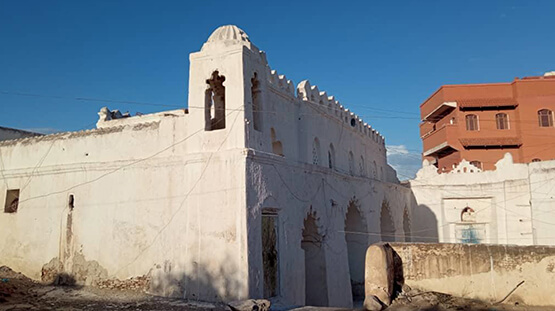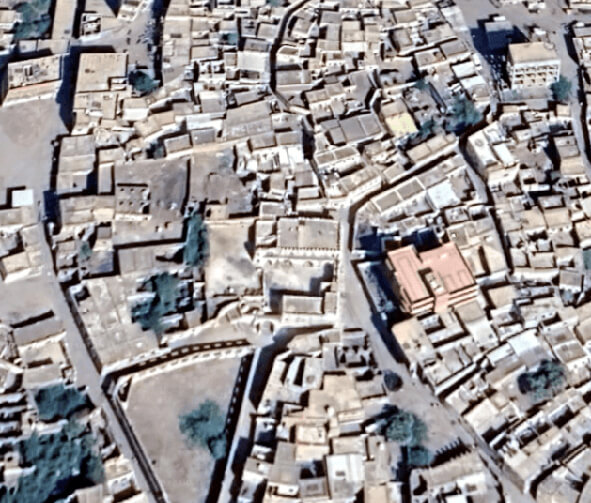
Al-Jabartiyyah Mosque
Zabīd – Al-Ḥudaydah
مسجد ومدرسة الجبرتية- زبيد- الحديدة
Monument description
Al-Jabartiyyah Mosque is located in the historic city of Zabid. The Monument is characterized by a traditional architecture and it is considered one of the most important landmarks in the city of Zabid. It was built of bricks and limestone, and clay was used in the bricks and parts of the shrine’s wood as pottery.

Architectural and cultural value
Construction style and built date: The Mosque is rectangular in shape in the main space and can accommodate about 130 people, including the covered outdoor spaces. It contains an open space of 144 m2 and a pond that is currently buried. It does not contain domes except for the dome of the path. The Mosque is surrounded by paved corridors from the southern and eastern sides. It was established by Prince Al-Akram Saad bin Saeed Al-Makhzoumi in the year 1181 AH. Some historical sources indicate that the construction dates back to 632 AH.
Components of the Mosque: Prayer Hall, Mihrab, Minaret, Al-Shamasey edifice, side corridor, pool, toilet. The monument area is 650 m2.
- Justifications for intervention:
- 1. Increase in salinity areas over time due to rain
- 2. Cracks widening due to negligence
- 3. More walls have collapsed, due to delayed restoration
- 4. Damage to the doorway’s lintels5. Increasing of cracks in the walls
- 6. Damaged floors leads to the abandonment of the Mosque by the worshipers and the increase in the damages.
- Monument conditions:
- The Monument has many damages, including:
- 1. Cracks spread in the inner and outer walls of the Mosque
- Treatment: Cracks treatment in the inner and outer walls
2. Dilapidated ceilings in main block and compartments - Treatment: Removing the dilapidated ceilings that need urgent intervention before they collapse, and installing wooden ceilings from the same original wooden material
3. Wood decay due to termite - Treatment: ermite infestation treatment
4. Damaged floors - Treatment: Restoration of damaged floors
5. Walls in danger of falling - Treatment: Digging, reinforcing and making foundations for dilapidated walls for the purpose of rebuilding in the traditional way.

Countries







